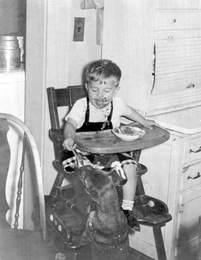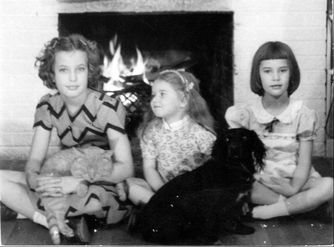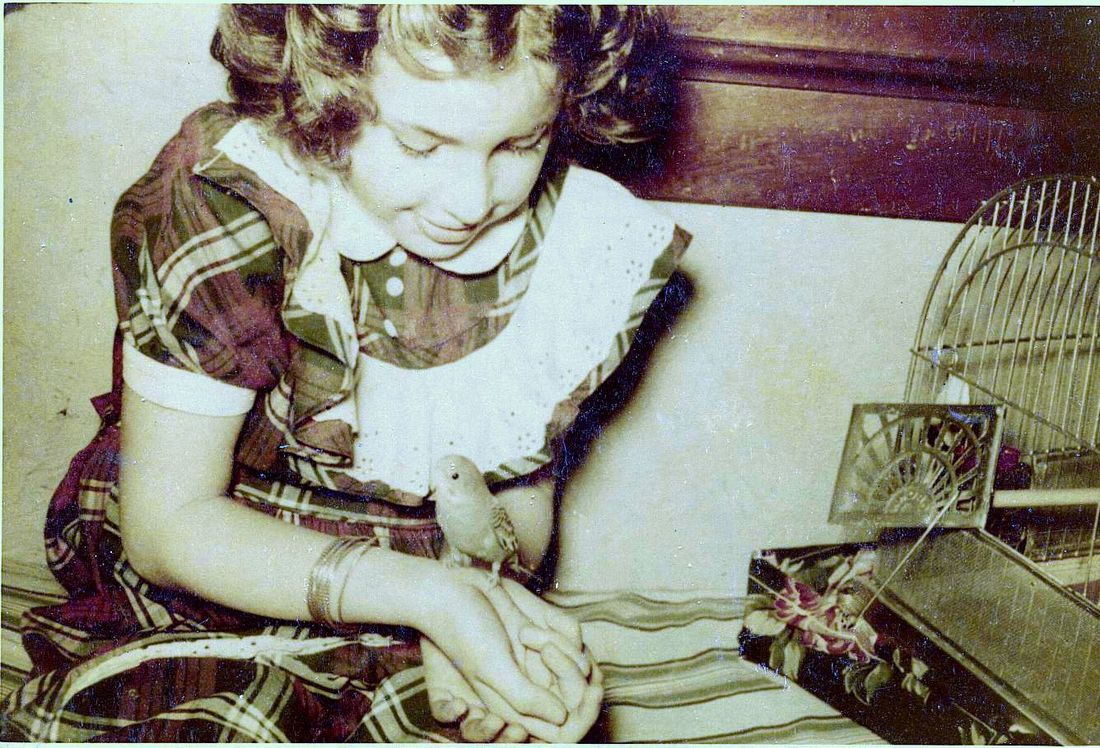None of those cute pair names like Nip and Tuck or Salt and Pepper or Whisky and Soda for him! Rather, finding something catchy to call our pets was only a starting point for the prolonged discussion by which, through some cabalistic process, we eventually arrived at their true titles. So it turned out that Perky the tabby was really Percopolis, Penny the little car-chasing spaniel was Lady Penelope Penny van Pennysworth, Laurie the goofy boxer was Laurelita von Sniffnwoof, and Goldie, our gentle giant of a yellow tom, was actually John Timothy McGoldrick.
My dad came by this practice honestly. I can’t remember a time when his own mother didn’t have a calico cat capable of prolific reproduction, and although we always knew each in this long succession of creatures as "Orrie," their collective official name was Aurora Borealis. My grandmother charged $5 for each of Orrie's kittens, claiming they were much easier to place if you sold them than if you gave them away; somehow, to my mother's eternal amazement, my grandmother succeeded in selling out every litter.
 Sharing!
Sharing! One dog-related task that I always participated in enthusiastically, however, was a regular Saturday morning session that somehow turned into a bizarre father-daughter bonding ritual. No one had ever heard of Lyme disease then - perhaps it wasn't even a recognized diagnosis yet - but living at the Jersey Shore meant lots and lots of ticks, and the ones we knew best were dog ticks. When the season started in the Spring, my father filled a glass jelly jar with kerosene and then sat on the cellar stairs with a dog between his knees, tweezers in hand and his daughter at his side, watching with abject fascination. As the season wore on, the jar would become filled, with both the athletic little black ones that had barely had a chance to latch on and the large bloated white ones that had been gorging on dog blood for days. By the end of the season my father would happily display his trophy collection to anyone unwary enough to feign an interest in the process.
Other non-pets included the fireflies we kept in jars by our bedside, watching dreamily as they lit up the room after dark.
Beyond that, my many rather elaborate efforts to catch and adopt wildlife were uniformly unsuccessful. For some reason a squirrel was at the top of my wish list. No one ever explained to me that our pets were bred to be infantilized, and that wild animals could not readily be tamed; or if anyone did I didn't listen.
But what really excited me was that you could supposedly teach your parakeet to talk. Forget about canaries; I wanted my bird to converse with me, not serenade me. Unfortunately, either Archie wasn’t the brightest budgie in the flock, or more likely we weren't systematic enough to train him properly. For whatever reason, we never succeeded in turning Archie into much of a raconteur.
He did, however, have one notable verbal accomplishment. In those days when you wanted to make a telephone call, you picked up the receiver and the operator (a real human, and always a woman) said “Number, please.” Almost all our numbers began with “Asbury Park two,” the local exchange, followed by four additional digits that uniquely specified the recipient. Archie’s cage hung right over the telephone, and Archie became quite adept at saying the three little words he heard most often, “Asbury Park two.”
Sadly, Archie came to a bad end at the claws of one of our mama cats. I was devastated and insisted on wearing a black armband to school.
In my childhood home and I'm sure in many other homes of the late 1940s and early 1950s, however, this new invention hadn't quite caught on yet. I also don’t remember the practice of routinely neutering male cats, though females were generally spayed. Consequently, there was no such thing then as what we would now call an indoor cat, and life with a tom involved a lot of patching up.
So it was with John Timothy McGoldrick, son of one of the many Orrie's and a wondrous beast with totally contrasting outdoor and indoor personalities. Outdoors, birds feared him, and rightly so. Indoors, he drooled like a baby and happily let Archie perch on his head, purring all the while.
He did, however, have a disconcerting habit of disappearing for days at a time, and as he grew older his absences grew longer. The day my parents finally left the house on Pinewood Drive to move to Long Island, Goldie was nowhere to be found. All the neighbors were asked to watch for Goldie and notify us immediately if he turned up, but he never did.



 RSS Feed
RSS Feed